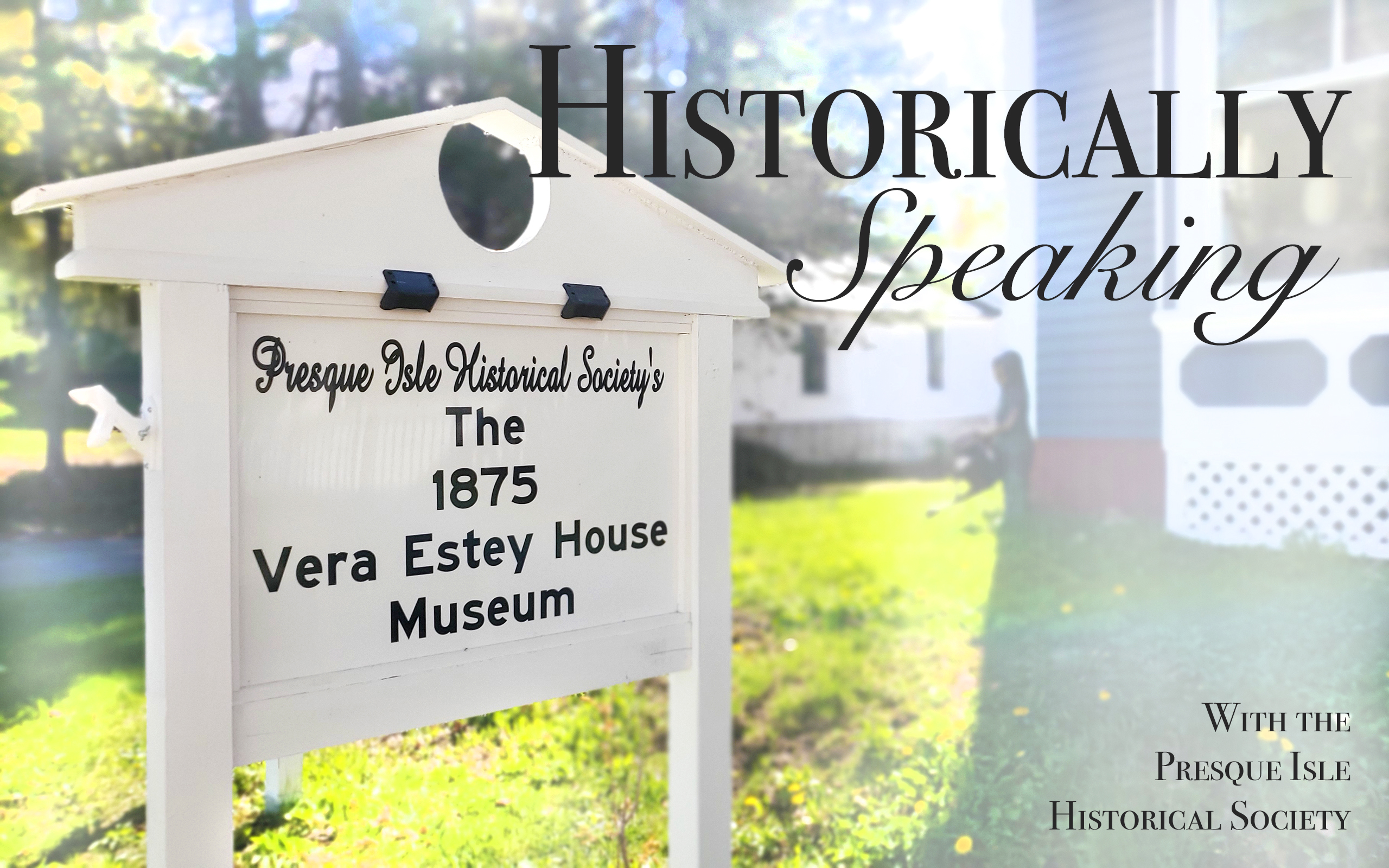About one-third of the houses in Maine were built before 1950 giving Maine the eighth oldest housing stock in the United States. Presque Isle, originally known as Fairbanks Mills, was settled in 1828.
It was primarily during what is referred to as the “Victorian Era” that many of the houses in this community were built. The Victorian Era, 1837-1901, refers to the time period during which Queen Victoria reigned in Great Britain. Even though Queen Victoria passed away in 1901, the Victorian Era is often considered to continue to 1910.
Victorian houses have certain architectural characteristics. They are typically narrow and tall; have steep, gabled roofs; contain lots of stairs; have bay windows, wraparound porches, towers and turrets, asymmetrical design, and balconies that go nowhere. Presque Isle Historical Society’s 1875 Vera Estey House Museum, located at 16 Third St., is a good example, being narrow and tall with lots of stairs and a bay window. A bay window is a three-sectioned window that bows outward from the main lines of the house.
Around town, the house located at 17 Academy St. has a beautiful turret, while 47 Third St. boasts a balcony that goes nowhere. An example of a wraparound porch can be seen on the front of 20 Academy.
Taking the Victorian house to an even higher level of design is the “Painted Lady.” The term “Painted Lady” was first used in the 1978 book by Elizabeth Pomada and Michael Larsen, “Painted Ladies – San Francisco’s Resplendent Victorians,” and has since been used to describe Victorian houses with specific architectural features in other cities.
Some of these more unusual features include: stained-glass windows, gingerbread trim, fish-scale shingles, corbels, and three or more exterior paint colors to enhance the architectural features. Some Painted Ladies feature as many as nine different colors — in other words, a lot of fancy words to describe what are often fanciful and ornate houses. Gingerbread trim refers to wood trim enhancing doors, windows, roof lines and porches that is fanciful and elaborate. Fish scale shingles have rounded or scalloped edges. Corbels are basically fancy brackets. Originally, corbels had a purpose: to support weight. They are thicker and fancier than regular brackets.
Victorians believed in dramatic paint colors. One of the reasons for the variety of colors used is that chemical pigments for paints first became available during this era. Authentic colors for Victorian houses consisted of various hues of deep golden yellow, rust, beige, taupe, brown, and ivory. With many of today’s Victorian homes, especially in the San Francisco area, one will see bright colors such as turquoise, purple, lime green, and gold being used.
The Victorian Era was unusual for so many reasons. The Industrial Revolution took place during this time and it was the first time in history that families could boast expendable income. While the Victorians might not come out and verbally tell you they were wealthy or flash a wad of cash, they definitely wanted you to know they had money. In fact, the San Francisco Painted ladies came about during the California Gold Rush and these elaborate and fanciful homes were a way to showcase that wealth. This can be seen in the interiors as well.
If one were to take a tour of the inside of the Historical Society’s 1875 Vera Estey House Museum, various symbols of wealth are readily on display in every room, from beaded fringed lampshades to an ivory-handled manicure set in a velvet and satin box.
Although the community would probably have had many examples of Painted Ladies at one time, as time has passed and people have remodeled their homes and put on new siding, many of these once beautiful and fanciful architectural features have virtually disappeared.
Today, Presque Isle only boasts two Victorian Painted Ladies: 45 Third St. and 63 Dudley St. An interesting side note is that 63 Dudley also served as one of the town’s private hospitals before Presque Isle Hospital was opened in 1912.
Kimberly R. Smith is the secretary/treasurer of the Presque Isle Historical Society.








